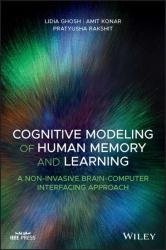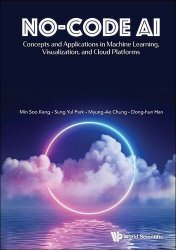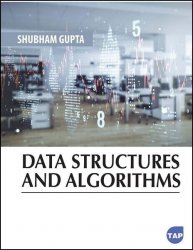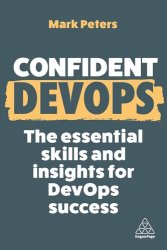 Название: Cognitive Modeling of Human Memory and Learning: A Non‐invasive Brain‐Computer Interfacing Approach
Название: Cognitive Modeling of Human Memory and Learning: A Non‐invasive Brain‐Computer Interfacing ApproachАвтор: Lidia Ghosh, Amit Konar
Издательство: Wiley-IEEE Press
Год: 2021
Страниц: 266
Язык: английский
Формат: pdf (true), epub
Размер: 16.2 MB
Proposes computational models of human memory and learning using a brain-computer interfacing (BCI) approach.
Human memory modeling is important from two perspectives. First, the precise fitting of the model to an individual's short-term or working memory may help in predicting memory performance of the subject in future. Second, memory models provide a biological insight to the encoding and recall mechanisms undertaken by the neurons present in active brain lobes, participating in the memorization process. This book models human memory from a cognitive standpoint by utilizing brain activations acquired from the cortex by electroencephalographic (EEG) and functional near-infrared-spectroscopic (f-NIRs) means.
Computational Intelligence (CI) is the rubric of a number of intelligent tools and techniques that synergistically complement each other's performance and thus jointly may serve as a complete approach to handle complex real‐world problems. The memory encoding and recall processes and signal transduction across distributed modules of memory is primary controlled by the human nervous system. This can be taken up by artificial neural networks and deep learning models of CI. In addition, the brain signals being non‐stationary have intra‐ and inter‐session fluctuations, which can be modeled by fuzzy sets (in particular type‐2 fuzzy sets (T2FS)). In fact, the book proposes interesting models of memory and learning by amalgamating fuzziness in the settings of deep brain learning network. The parameter optimization of the memory models to attain the best performance can be designed by evolutionary computation. Thus memory modeling can be performed efficiently by synergism of different CI techniques.
Although there are traces of Deep Learning techniques in EEG time‐series data analysis, there is hardly any work on EEG‐induced human memory response analysis in face recognition tasks using Deep Learning. The present work makes an attempt to fill this void. Among the well‐known deep learning algorithms, convolutional neural network (CNN), recurrent neural network (RNN), and LSTM network have shown promising results in sequential data processing of different applications, concerning speech, image, video, and natural languages. The novelty of the present chapter lies in designing a deep LSTM network with attention mechanism for classifying the human memory response captured by an EEG device during recognition of familiar and unfamiliar faces by utilizing ERPs. The attention mechanism has been modeled here by adding the attention weights in every layer of the network in the settings of an optimization problem. Any swarm/evolutionary optimization algorithm could have been employed to handle this single‐objective optimization problem.
Cognitive Modeling of Human Memory and Learning A Non-invasive Brain-Computer Interfacing Approach begins with an overview of the early models of memory. The authors then propose a simplistic model of Working Memory (WM) built with fuzzy Hebbian learning. A second perspective of memory models is concerned with Short-Term Memory (STM)-modeling in the context of 2-dimensional object-shape reconstruction from visually examined memorized instances. A third model assesses the subjective motor learning skill in driving from erroneous motor actions. Other models introduce a novel strategy of designing a two-layered deep Long Short-Term Memory (LSTM) classifier network and also deal with cognitive load assessment in motor learning tasks associated with driving. The book ends with concluding remarks based on principles and experimental results acquired in previous chapters.
Examines the scope of computational models of memory and learning with special emphasis on classification of memory tasks by deep learning-based models
Proposes two algorithms of type-2 fuzzy reasoning: Interval Type-2 fuzzy reasoning (IT2FR) and General Type-2 Fuzzy Sets (GT2FS)
Considers three classes of cognitive loads in the motor learning tasks for driving learners
Cognitive Modeling of Human Memory and Learning A Non-invasive Brain-Computer Interfacing Approach will appeal to researchers in cognitive neuro-science and human/brain-computer interfaces. It is also beneficial to graduate students of computer science/electrical/electronic engineering.
Скачать Cognitive Modeling of Human Memory and Learning: A Non‐invasive Brain‐Computer Interfacing Approach
[related-news] [/related-news]
Комментарии 0
Комментариев пока нет. Стань первым!















